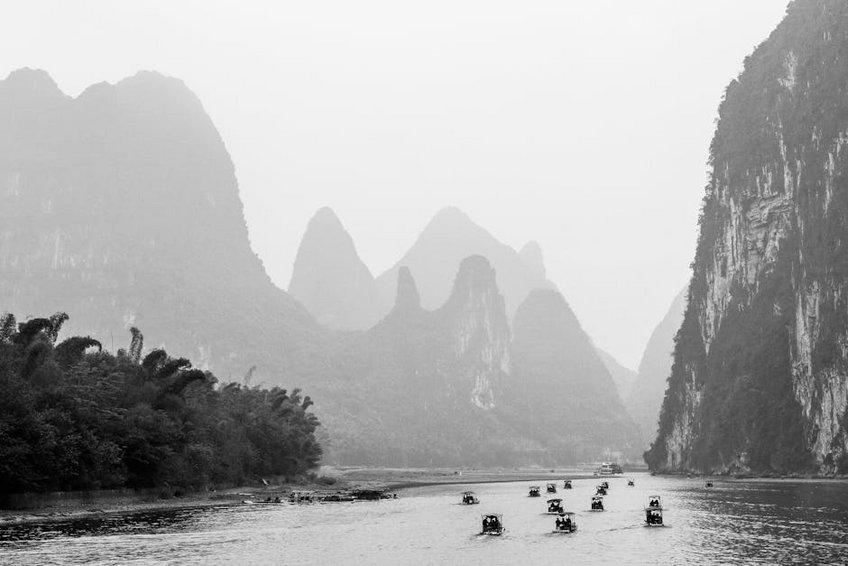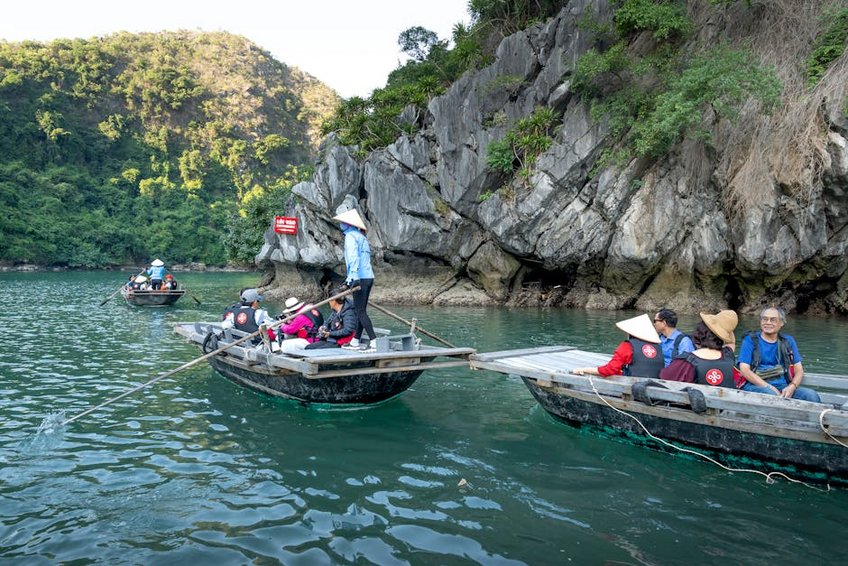Exploring the Mystical Myanmar Hpa An Limestone Caves: A Traveler’s Guide
Myanmar Hpa An Limestone Caves offer an unforgettable adventure through ancient geological formations and spiritual sanctuaries nestled in Kayin State’s lush landscapes. You’ll discover towering karst mountains, hidden Buddha statues, and serene river passages that make this destination a hidden gem in Southeast Asia. These caves, formed over millions of years, provide not just natural beauty but deep cultural insights into Myanmar’s Buddhist traditions and local life. Travelers often describe the experience as stepping into another world, where sunlight filters through cave openings onto glittering stalactites and tranquil pools. Whether you’re an avid explorer or a curious traveler, the Myanmar Hpa An Limestone Caves promise awe-inspiring moments and photographic opportunities at every turn. Planning your visit requires some knowledge of seasonal patterns and local customs to fully appreciate this unique destination. This comprehensive guide will walk you through everything from budget considerations to must-see spots, ensuring your trip is both memorable and smooth. Get ready to embark on a journey through one of Myanmar’s most captivating natural wonders, where adventure and spirituality intertwine beneath the earth’s surface.
Myanmar Hpa An Limestone Caves Essential Information – Getting Started
Understanding the basics of Myanmar Hpa An Limestone Caves helps you appreciate their significance and plan effectively. These caves are part of a extensive karst landscape in eastern Myanmar, featuring dramatic limestone formations, underground rivers, and religious sites that date back centuries. The region’s geology creates a perfect environment for cave systems, with many containing ancient pagodas and monasteries built inside them. You’ll find that each cave has its own unique character, from massive caverns with natural skylights to intimate chambers adorned with intricate murals. Local communities maintain these sites with great reverence, often involving them in daily worship and festivals. Visiting requires respectful behavior, such as removing shoes before entering sacred areas and dressing modestly to honor local customs. The caves are generally accessible year-round, but weather conditions can significantly impact your experience, especially during the rainy season when some paths may flood. Additionally, infrastructure in the area is developing, so you should prepare for basic amenities and adventurous transportation options. This foundational knowledge ensures you approach your exploration with both excitement and cultural sensitivity.
What You Need to Know – Key Facts
- Myanmar Hpa An Limestone Caves are primarily located in Kayin State, with Saddan Cave and Kawgun Cave being the most famous, featuring impressive Buddha images and natural formations.
- Entry fees for major caves range from $3-5 USD per person, often including basic guided tours led by local experts who share historical and cultural insights.
- The best visiting hours are early morning or late afternoon to avoid crowds and experience optimal lighting for photography, with most caves open from 8 AM to 5 PM daily.
- Budget travelers can expect daily expenses of $25-40 USD, covering basic guesthouses, local meals, and public transportation, with cave entry fees adding $10-15 for multiple sites.
- Mid-range options cost $50-80 USD per day, including comfortable hotels, guided tours, and occasional private transport, enhancing convenience without breaking the bank.
- Luxury experiences range from $100-150 USD daily, featuring boutique resorts, private guides, and boat tours, offering personalized insights and premium comfort.
- Myanmar Ministry of Hotels and Tourism
- Lonely Planet Hpa An Travel Guide
Key Details – Geological and Cultural Significance
The limestone formations in Hpa An resulted from tectonic activity and erosion over millennia, creating stunning stalactites and stalagmites that captivate geologists and travelers alike. Many caves serve as active Buddhist pilgrimage sites, housing relics and statues that reflect Myanmar’s deep spiritual heritage. You’ll notice how local legends intertwine with natural features, such as stories of nats (spirits) guarding certain caves, adding a mystical layer to your visit. Conservation efforts are ongoing to protect these delicate environments from tourism impacts, so you’re encouraged to follow eco-friendly practices like carrying out trash and using reusable water bottles. The area’s biodiversity includes unique bat species and tropical plants, making it a haven for nature enthusiasts. Understanding these details enriches your experience, transforming a simple cave tour into a meaningful journey through history and ecology.
Myanmar Hpa An Limestone Caves Planning Your Trip – Seasonal and Budget Advice
Planning your trip to Myanmar Hpa An Limestone Caves involves considering seasonal variations, budget constraints, and essential preparations to ensure a hassle-free adventure. The dry season from November to February offers the most comfortable weather, with cooler temperatures and minimal rainfall, making cave exploration more accessible and enjoyable. However, this period also attracts more tourists, so you might encounter crowds at popular sites like Saddan Cave. Alternatively, the shoulder seasons of March to May or October can provide a balance of decent weather and fewer visitors, though temperatures may rise, requiring extra hydration. Budget-wise, Myanmar remains an affordable destination, but costs can vary based on your travel style, from backpacker hostels to mid-range hotels. You should allocate funds for transportation, as reaching Hpa An often involves buses or boats from Yangon, and local tuk-tuks or bicycles for cave hopping. Preparation is key; pack sturdy footwear for uneven terrain, lightweight clothing for humidity, and a headlamp for darker cave sections. By addressing these elements early, you’ll maximize your time immersed in the caves’ wonders rather than dealing with logistical surprises.
Best Time to Visit Myanmar Hpa An Limestone Caves
For optimal conditions, plan your visit between November and February when temperatures average 20-25°C (68-77°F), and rainfall is minimal, allowing easy access to all cave sites. During these months, you’ll enjoy clear skies and comfortable humidity levels, perfect for hiking and photography. The rainy season from June to September brings lush greenery but can cause flooding in lower caves, so check local advisories if traveling then. Shoulder months like October or March offer a quieter experience with moderate weather, though you might encounter occasional showers. Festivals like Thadingyut in October can add cultural vibrancy but also increase crowds, so book accommodations in advance. Ultimately, the best time depends on your preference for crowd levels and weather tolerance, with dry season being the most reliable for first-time visitors.
Budget Planning and Costs
Essential Preparation Checklist
Before heading to Myanmar Hpa An Limestone Caves, ensure you have valid travel insurance covering adventure activities, as medical facilities in rural areas may be limited. Pack essentials like insect repellent, a reusable water bottle, and cash in USD or Kyat, as ATMs are scarce in Hpa An town. You’ll also need appropriate clothing—long sleeves and pants protect against mosquitoes and respect cultural norms at religious sites. Don’t forget a power bank for your devices, as electricity can be unreliable, and download offline maps since internet connectivity might be spotty. Checking visa requirements for Myanmar is crucial; most Western passport holders can obtain an e-visa online for $50 USD, valid for 28 days. Finally, learn a few basic Burmese phrases like “mingalaba” (hello) to connect with locals, enhancing your cultural immersion and safety during the trip.

Myanmar Hpa An Limestone Caves Top Attractions and Activities – Must-See Highlights
Myanmar Hpa An Limestone Caves boast a diverse array of attractions that cater to adventurers, photographers, and culture enthusiasts alike. You can start with Saddan Cave, one of the largest and most famous, where you’ll paddle through an underground river passage surrounded by glittering rock formations and ancient statues. Another highlight is Kawgun Cave, renowned for its thousands of tiny Buddha images carved into the walls, dating back to the 7th century, offering a glimpse into Myanmar’s artistic heritage. For those seeking active exploration, hiking up Mount Zwegabin provides panoramic views of the karst landscape and access to smaller, less-visited caves along the trail. Don’t miss the chance to experience local life by visiting nearby villages, where you might join farmers in fields or sample traditional Kayin cuisine. Many caves also feature spiritual elements, such as meditation chambers and monk residences, allowing you to observe Buddhist practices in a serene setting. Balancing these activities ensures a rich, multifaceted journey through Hpa An’s natural and cultural treasures.
Must-See Highlights – Iconic Cave Experiences
Saddan Cave stands out for its massive interior and boat rides that take you through illuminated sections, revealing stalactites and Buddha images in dramatic light. You’ll feel a sense of wonder as you glide along the water, with guides pointing out geological features and historical anecdotes. Kawgun Cave impresses with its intricate terracotta votive tablets and murals, showcasing Mon Kingdom artistry that has survived centuries. Another essential stop is Yathaypyan Cave, known for its “cave within a cave” structure and natural pool, perfect for a refreshing dip after a hot hike. These sites often have small donation boxes for maintenance, so carrying some local currency allows you to contribute to their preservation. Visiting these highlights early in the day helps avoid tour groups and gives you quieter moments to absorb the spiritual ambiance and photographic details.
Hidden Gems and Local Favorites
Beyond the well-trodden paths, Kyauk Kalap Monastery offers a unique experience on a limestone pinnacle surrounded by water, though not a cave, it complements the area’s karst theme. Locals often recommend lesser-known spots like Hpar Pu Cave, which requires a short boat trip and involves climbing ladders to discover secluded altars and bat colonies. You might also explore Lumbini Garden, where hundreds of Buddha statues stand against a backdrop of limestone hills, providing a peaceful retreat away from crowds. Engaging with community-based tours can lead you to hidden caves used in local rituals, where guides share stories passed down through generations. These gems offer a more intimate connection to the region, allowing you to appreciate the Myanmar Hpa An Limestone Caves beyond the tourist trail and support sustainable tourism initiatives.
Myanmar Hpa An Limestone Caves Practical Travel Information – Logistics and Accommodation
Navigating the practical aspects of visiting Myanmar Hpa An Limestone Caves ensures a smooth and enjoyable trip, from transportation to lodging options. You’ll typically arrive via bus from Yangon, a 7-9 hour journey costing $10-15 USD, or by flight to Hpa An’s small airport if available, though ground transport is more common. Once in town, renting a bicycle or motorbike for $5-10 USD per day gives you flexibility to explore caves at your own pace, while tuk-tuks and shared taxis offer affordable alternatives for group travel. Accommodation ranges from budget guesthouses in Hpa An town to eco-lodges near cave sites, with prices varying by season and comfort level. It’s wise to book in advance during peak months, as popular places fill quickly. Additionally, local guides are invaluable for cave visits, providing safety tips and cultural context, with rates around $15-25 USD for half-day tours. Understanding these logistics helps you focus on the experience rather than unexpected challenges, making your adventure both safe and memorable.
| Category | Options/Features | Price Range (USD) |
|---|---|---|
| Accommodation | Guesthouses with basic amenities, mid-range hotels with AC, eco-lodges with scenic views | $15-30 (budget), $40-70 (mid), $80-120 (luxury) |
| Transportation | Buses from Yangon, local tuk-tuks, bicycle rentals, private car hires | $10-20 (bus), $5-15 (local), $30-50 (private) |
| Guided Tours | Half-day cave excursions, full-day hiking packages, cultural village visits | $15-25 (half-day), $40-60 (full-day), $20-30 (cultural) |


